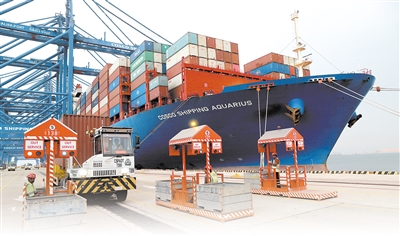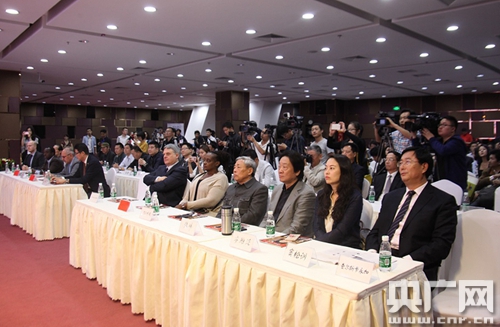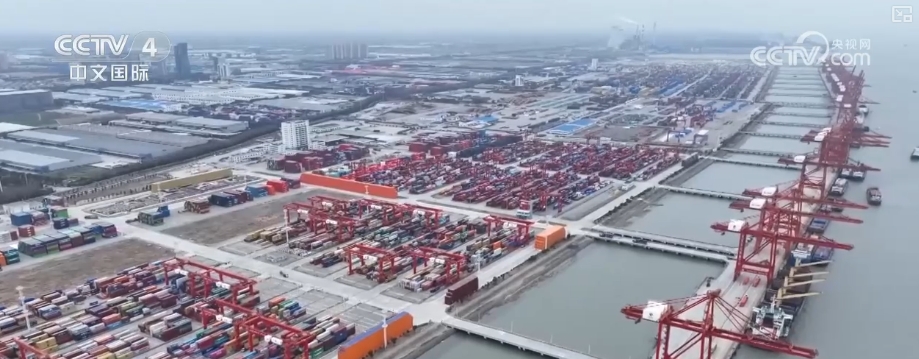"The Friendship Between The World": The Silk Road, The Link Between Eastern And Western Civilizations
"The Friendship Between The World": The Silk Road, The Link Between Eastern And Western Civilizations
"The friendship between the world" comes from the "Tao Te Ching", which talks about the principle of the mutual connection between all things and the integration of the world. Two thousand years ago, an ancient road named after silk stretched across Europe and Asia, with camel bells as words and caravans as bridges, connecting the wisdom of the East and the civilization of the West into a line, confirming that "communication will be connected."

"The friendship between the world" comes from the "Tao Te Ching", which talks about the principle of the mutual connection between all things and the integration of the world. Two thousand years ago, an ancient road named after silk stretched across Europe and Asia, with camel bells as words and caravans as bridges, connecting the wisdom of the East and Western civilization into a line, confirming the eternal philosophy of "communication is connected, and common prosperity is shared." It is not only a business story, but also a vivid footnote to the dialogue between civilizations.

1. The "interaction" of matter: the wisdom of survival that communicates with existence and non-existence
Zhang Qian "digs out the air" The Western Regions opened the prelude to material exchange. The silk, porcelain and tea from the east travel west along the Hexi Corridor, stunning the Roman court with its smoothness and elegance; the good horses, grapes and alfalfa in the west come from Central Asia, injecting new vitality into the Central Plains. In Dunhuang murals, the scene of Hu merchants leading camels full of goods is vivid, confirming the simple wisdom of "making everything change what they have without". This exchange has never stopped at commodities, but also conveys the survival experience of different regions - the agricultural technology of the Central Plains has improved the oasis agriculture in the Western Regions, the metallurgical technology of the Western Regions has enriched the manufacturing of weapons in the Central Plains, and the flow of matter has allowed civilization to take root and grow in complementarity.

2. The "interaction" of culture: the spiritual resonance of mutual learning and symbiosis
The greatness of the Silk Road lies in its utilitarianism at the material level and becoming a melting pot of cultural integration. Buddhism spread east along this road, colliding with Confucian and Taoist thoughts in the Central Plains, creating an artistic treasure of the Mogao Grottoes in Dunhuang; papermaking and printing in the Central Plains spread westward, providing a technical cornerstone for the European Renaissance. The music and dance in Kucha were integrated into the Tang Dynasty court, and the Persian painting style influenced the calligraphy and painting of the Central Plains, and the symbols of different civilizations were reinterpreted in exchanges. This kind of integration of "each is beautiful and shared by beauty" breaks the barriers of the region and proves that civilization is not an isolated island, but a river that nourishes each other.
3. Spiritual "intercourse": the eternal pursuit of harmony in the world
From Ban Chao's "publishing his pen to join the army" to the Eastern legend written by Marco Polo, the Silk Road has always carried mankind's yearning for peaceful interactions. It is not a path to conquest, but a path to dialogue - messengers travel to convey friendship, and monks travel to show kindness. This "harmonious but different" spirit of communication is the core essence of "Friendship in the world": do not pursue homogeneity, but respect differences, find consensus in communication, and gather strength in mutual trust.

Today's "Belt and Road" is the continuation of the spirit of the Silk Road. When the China-Europe freight train replaces the camel fleet, and when digital trade connects Asia and Europe, the philosophy of "Friendship between the world" becomes clearer: the prosperity of civilization has never been to be alone, but to be open and tolerant. Although the camel bell on the Silk Road has gone far away, the revelation it leaves is eternal - only by breaking the barriers with exchanges and replacing confrontation with cooperation can we realize the beautiful vision of "great harmony in the world".





